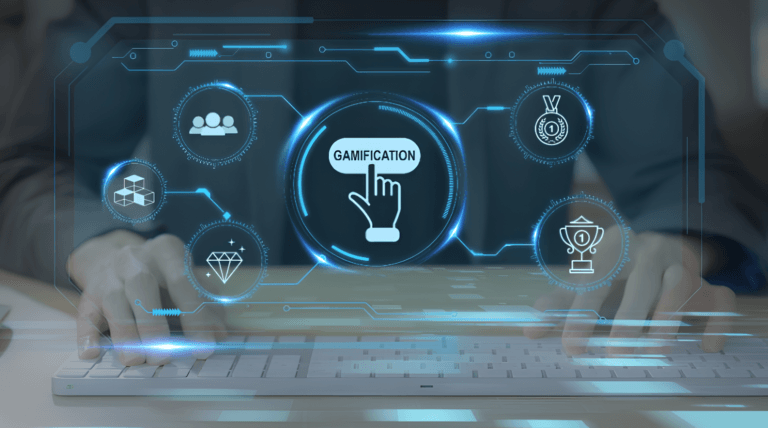Employee performance reviews can feel like a daunting process, but they’re essential for growth and success. Whether you’re giving or receiving feedback, these evaluations offer a chance to reflect on achievements, address challenges and set clear goals for the future. Done right, they can boost morale, enhance productivity and strengthen workplace relationships.
You might think of them as just another HR formality, but performance reviews are so much more than ticking boxes. They provide valuable insights into individual contributions while aligning everyone with the organisation’s objectives. When approached thoughtfully, they become a powerful tool for both personal development and business growth.
Integrating Learning Management Systems (LMS) into employee performance reviews revolutionizes traditional evaluation methods by automating processes, enhancing accuracy, and fostering continuous development. An LMS not only delivers training but also tracks progress, assesses competencies, and aligns learning outcomes with organizational goals. This integration facilitates data-driven evaluations, reduces administrative burdens, and promotes a culture of continuous improvement.
By leveraging an LMS, organisations can ensure that performance reviews are timely, objective, and closely linked to personalized development plans, ultimately driving both employee satisfaction and organizational success.
Key Components Of Effective Performance Reviews
Performance reviews achieve their purpose when they are structured and focused on meaningful outcomes. Incorporating essential components ensures these evaluations drive growth and engagement.
Setting Clear Objectives
Define measurable objectives to provide a benchmark for evaluating performance. Use specific, time-bound goals aligned with organisational priorities to clarify expectations. For example, setting targets such as achieving a 15% increase in sales within six months offers clear direction for both parties. Transparent objectives establish accountability and guide employees towards desired outcomes.
Regular Feedback
Provide consistent feedback throughout the year to prevent surprises during performance reviews. Highlight achievements promptly and address concerns early to promote continuous improvement. For instance, discussing missed deadlines immediately rather than waiting for formal reviews encourages timely corrective actions. Regular feedback creates an environment of trust and keeps performance discussions constructive.
Employee Participation
Involve employees actively in the review process to make evaluations collaborative rather than one-sided. Encourage self-assessments that allow individuals to reflect on their contributions and challenges before the meeting. Jointly discussing development opportunities fosters mutual understanding and strengthens commitment to agreed goals. Prioritising employee input enhances engagement and ownership over results.
Best Practices For Conducting Performance Reviews
Effective performance reviews require a strategic approach to maximise their impact on employees and the organisation. Following best practices ensures evaluations are constructive, fair, and growth-oriented.
Preparing Thoroughly
Preparation is crucial for meaningful performance reviews. Gather relevant data from various sources such as project outcomes, peer feedback, and individual achievements to ensure an accurate assessment. Review the employee’s previous goals and progress made since the last evaluation to provide context for discussions. Use structured templates or checklists to standardise the process, reducing inconsistencies across teams.
Encouraging Open Communication
Open communication fosters trust and transparency during reviews. Create an environment where employees feel comfortable sharing their perspectives by actively listening without interruptions or judgment. Ask open-ended questions like “What challenges have you faced?“ or “How can we better support your goals?“ to encourage honest dialogue. Acknowledge successes while constructively addressing areas that need improvement.
Focusing On Development
Development-focused reviews drive employee growth and motivation. Set specific, measurable objectives aligned with both individual aspirations and organisational priorities. Provide actionable feedback tailored to each employee’s strengths and areas for improvement, offering resources such as training programs or mentorship opportunities when possible. Ensure follow-up plans include regular check-ins to monitor progress towards agreed goals effectively.

Steps to Automate Performance Reviews with an LMS
An LMS is a digital platform that facilitates training, upskilling, and assessment of employees. By integrating performance evaluations with an LMS, organizations can track progress, analyze performance data, and generate meaningful insights that support employee growth.
1. Define Performance Metrics and KPIs
Before automating performance reviews, organizations need to determine the key performance indicators (KPIs) relevant to their business goals. These may include:
- Completion of mandatory training modules
- Assessment scores and certifications
- Application of acquired skills in real-world tasks
- Feedback from managers, peers, and customers
- Productivity and efficiency levels
Once these metrics are established, they can be integrated into the LMS to track employee progress and performance.
2. Integrate Learning & Development with Performance Evaluations
Modern LMS platforms come equipped with AI-powered analytics that can assess employee learning progress and correlate it with their job performance. Organizations can:
- Set up customized learning paths for employees based on their job roles
- Link training outcomes with performance evaluations
- Identify skill gaps and recommend courses to bridge them
By integrating L&D with performance management, employees receive continuous learning opportunities, ensuring that their growth aligns with business objectives.
3. Automate Feedback Collection and Performance Assessments
Manual performance assessments often suffer from inconsistency and human bias. LMS platforms allow organizations to automate feedback collection and assessments through:
- 360-degree feedback: Gathering insights from managers, peers, and clients
- Automated quizzes and skill tests: Evaluating competencies and knowledge
- AI-driven analytics: Identifying employee strengths and weaknesses based on data trends
- Self-assessments: Encouraging employees to reflect on their progress
Automated assessments ensure timely and consistent evaluations while reducing administrative workload.
4. Enable Continuous Performance Monitoring
Instead of waiting for annual performance reviews, an LMS enables continuous monitoring and real-time feedback. Features such as:
- Learning dashboards that display progress and achievements
- Performance heatmaps that highlight areas for improvement
- AI-generated insights to recommend skill enhancements
Continuous performance monitoring fosters a proactive approach to employee development, reducing surprises during formal evaluations.
5. Utilize Gamification for Engagement
Gamification elements in an LMS, such as badges, leaderboards, and reward points, can make performance tracking more engaging. Employees are motivated to:
- Complete training programs to earn rewards
- Compete in skill-based challenges
- Achieve milestones that contribute to career progression
By integrating gamification into performance reviews, organizations can foster a culture of learning and growth.
6. Streamline Goal Setting and Development Plans
An LMS allows organizations to set personalized goals for employees and track their progress. Key functionalities include:
- Setting SMART (Specific, Measurable, Achievable, Relevant, Time-bound) goals
- Assigning learning resources to help employees achieve their goals
- Scheduling automated reminders and progress reports
- Tracking individual and team achievements over time
With goal setting linked to performance reviews, employees gain clarity on expectations and development opportunities.
7. Generate Data-Driven Reports for Decision Making
One of the most significant advantages of automating performance reviews with an LMS is access to insightful reports. Organizations can:
- Analyze performance trends over time
- Compare employee competencies across departments
- Identify high-potential employees for leadership roles
- Make informed decisions on promotions, rewards, and training investments
LMS-generated reports remove subjectivity from performance reviews, ensuring fairness and transparency.
8. Provide Personalized Learning Recommendations
Based on performance evaluations, an LMS can suggest personalized learning pathways to help employees improve their skills. AI-driven recommendations include:
- Courses aligned with career aspirations
- Microlearning modules for quick skill enhancement
- Soft skill development programs for leadership growth
This personalized approach ensures that employees receive relevant training to enhance their performance.
Modern Trends In Performance Reviews
Performance reviews are evolving to meet the demands of a dynamic workplace. Modern approaches focus on leveraging technology and adopting continuous review practices to enhance employee development and organisational success.
Use Of Technology
Integrating technology streamlines performance reviews, making evaluations more efficient and data-driven. Performance management software, such as Workday, enables you to track progress against goals in real-time, consolidate feedback from multiple sources, and access analytics for informed decision-making. Automated tools reduce administrative tasks while ensuring consistency across evaluations. AI-powered platforms can also identify patterns in performance metrics, helping you address areas needing improvement or recognising exceptional contributions quickly.
Digital solutions facilitate transparency by creating shared dashboards where employees can view their objectives, achievements, and feedback history. This approach fosters accountability while empowering individuals with actionable insights into their growth trajectory.
Continuous Review Models
Continuous review models replace traditional annual appraisals with ongoing feedback cycles that prioritise regular communication between managers and employees. With this method, you can provide timely recognition for accomplishments (e.g., meeting project deadlines) or address challenges proactively before they escalate.
Frequent check-ins allow you to align individual efforts with shifting organisational priorities effectively. These discussions often include short-term goal-setting that adapts dynamically to changing circumstances while maintaining long-term career aspirations as a focus point.
Adopting continuous review practices nurtures an environment of trust by promoting open dialogue and reinforcing your commitment to employee growth through consistent support and guidance throughout the year.
Final Thought
Employee performance reviews are a powerful tool that can drive success for both individuals and organisations when approached thoughtfully. By fostering open communication, setting clear objectives, and embracing modern practices, you can transform these evaluations into meaningful opportunities for growth.
Consistent follow-up and the use of technology can further enhance the process, ensuring it remains relevant in today’s dynamic workplace. When executed effectively, performance reviews don’t just assess progress—they inspire it, creating a culture where everyone feels valued and empowered to excel.


